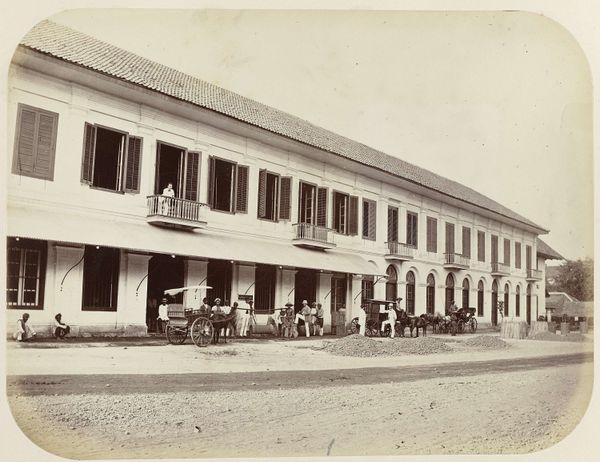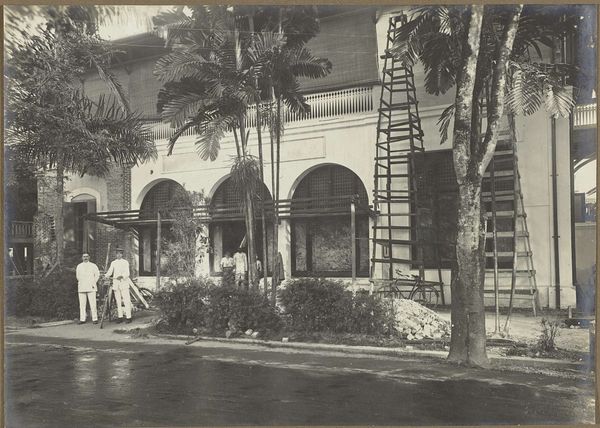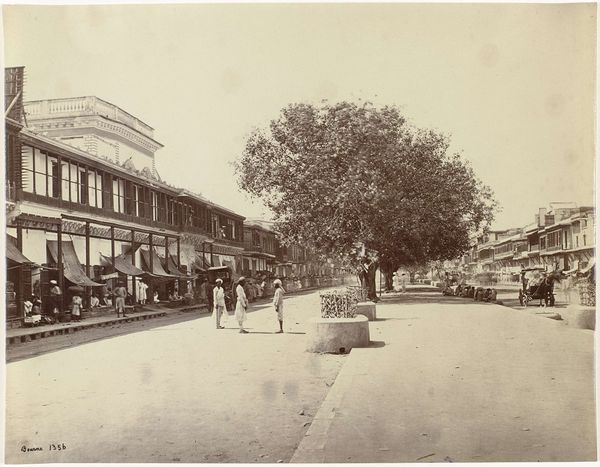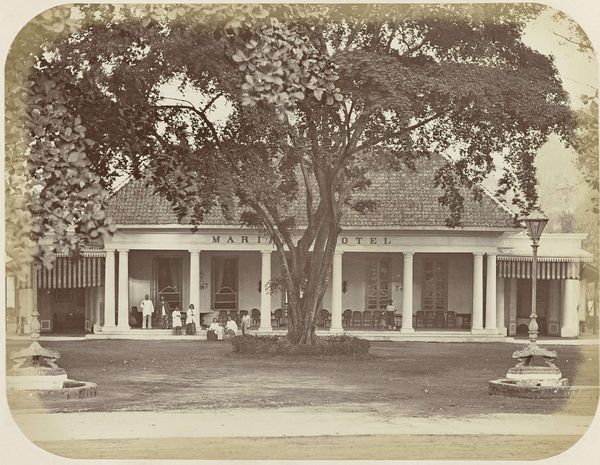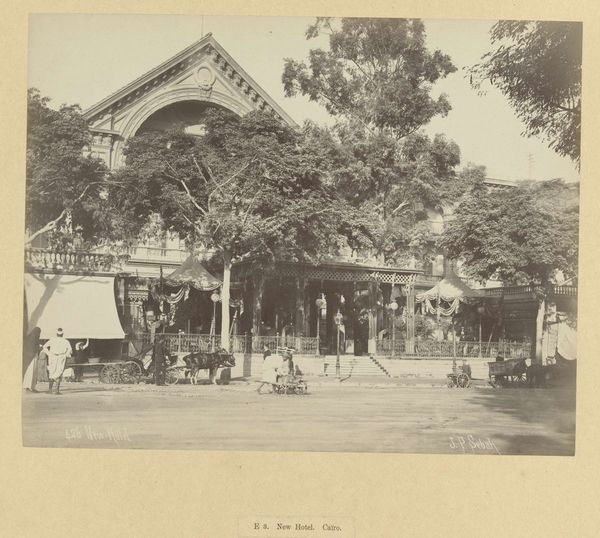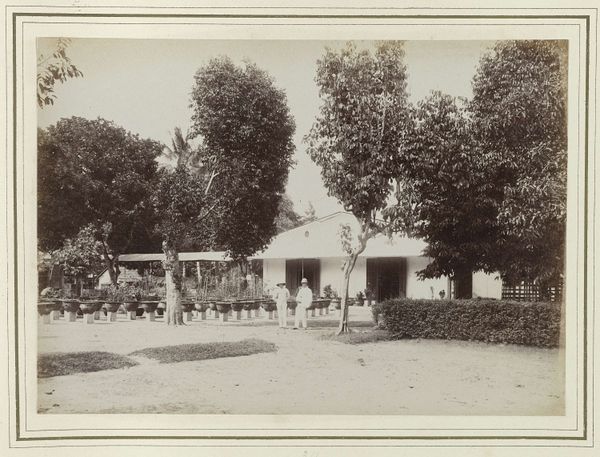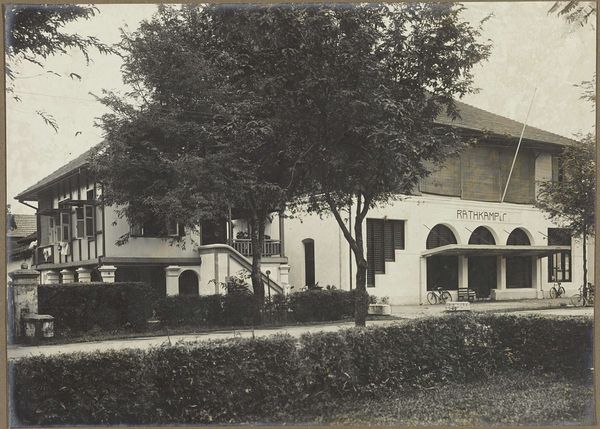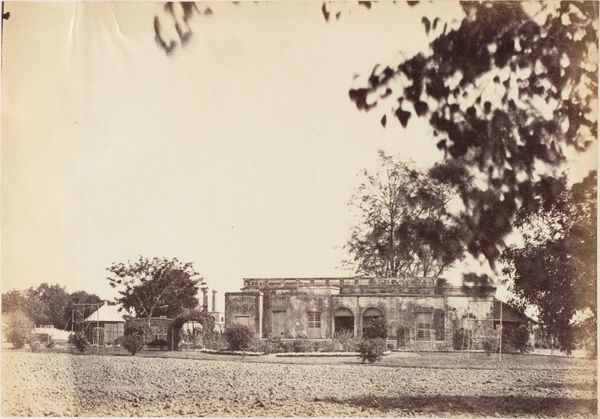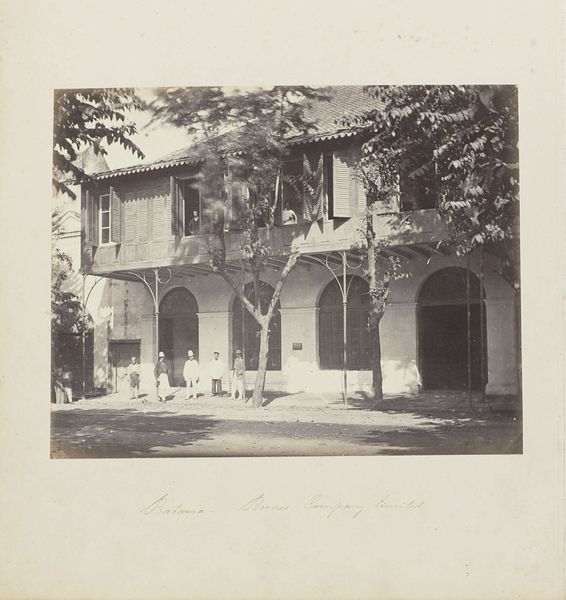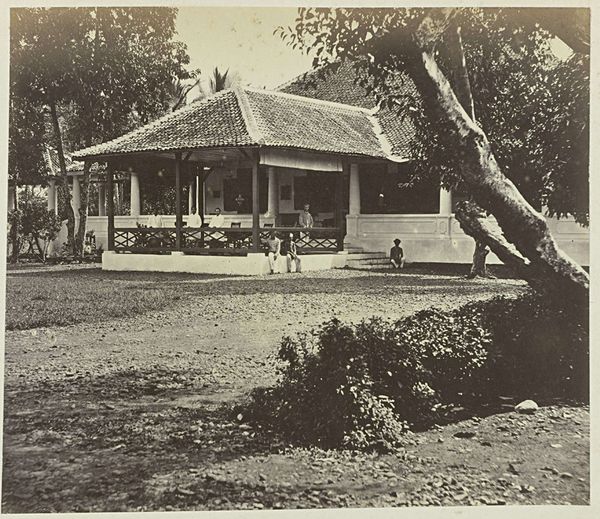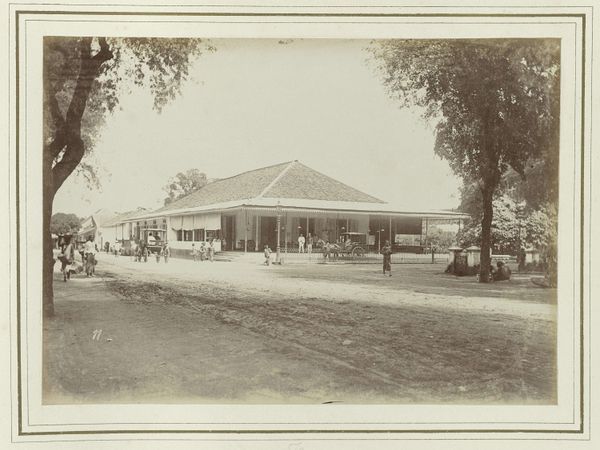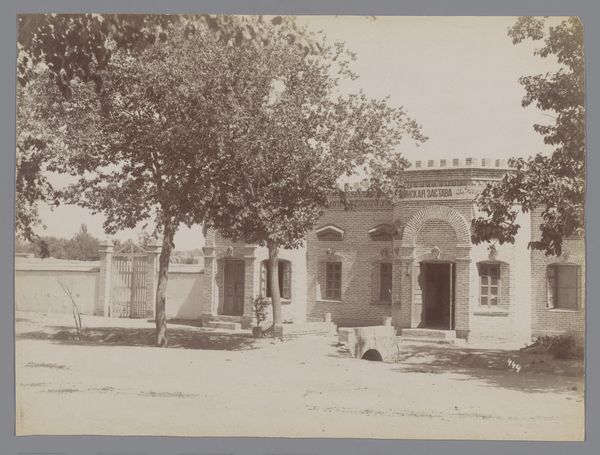
photography, albumen-print
#
portrait
#
dutch-golden-age
#
landscape
#
indigenism
#
historic architecture
#
traditional architecture
#
photography
#
group-portraits
#
orientalism
#
19th century
#
cityscape
#
albumen-print
Dimensions: height 190 mm, width 238 mm
Copyright: Rijks Museum: Open Domain
Curator: I'm immediately struck by the visual hierarchy in this image. The European figures in light-colored clothing dominate the foreground, their presence unavoidable. Editor: Indeed. This albumen print, "Handelshuizen aan de Kali Besar," or Trading Houses on the Kali Besar, was created around 1865 by Woodbury & Page. It depicts a street scene in what was then Batavia, now Jakarta, Indonesia. Curator: Batavia… the very name resonates with colonial ambition. Look at the details – the carefully positioned figures, the architecture clearly influenced by European styles. The picture is filled with codified social markers. Editor: Precisely. And the river itself, the Kali Besar, was the lifeblood of trade, but also a site of intense exploitation. These trading houses represent a complex tapestry of cultural exchange and economic disparity. Note how indigenous populations are rendered—seemingly observed from a distance, they exist outside the architectural boundaries of power and commerce, though they are shown at street level alongside Europeans. Curator: I wonder, too, about the implied narrative here. The way the figures are arranged – almost as if they’re performing for the camera, subtly projecting an image of order and control, almost creating a symbolic claim. Editor: That's a compelling point. This photograph becomes a deliberate construct, a tool used to reinforce the colonial narrative, creating an environment of commercial enterprise. This area of Batavia became essential in establishing commercial partnerships with other port cities. The trees also speak. They filter the image with a tropical ambiance that also hints at the hidden diseases behind the colonial promise. Curator: So the light and shadow, the composition, it’s all carefully orchestrated to communicate something specific – a particular vision of colonial power. The way these houses and people populate and shape the scene are deliberately framing commercial control. Editor: And that careful staging obscures so much – the labor that went into building these trading houses, the disruption to local economies, the human cost of empire. Curator: Yes, there's a melancholy underlying these scenes despite the bright facades of trade and industry that speak of progress. Editor: Seeing it now, though, allows us to question the narrative and reveal some hard truths about the legacy of colonialism. Curator: This image reminds me how photographs are never objective records, always prisms through which we inherit selected memories. Editor: A lens that is often ground to serve specific interests, inviting us to analyze images through an intersectional lens and examine historical power structures.
Comments
No comments
Be the first to comment and join the conversation on the ultimate creative platform.

